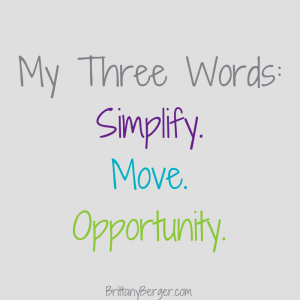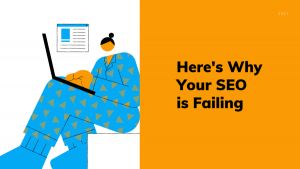Gather ’round the campfire, kids. Halloween is coming and I’ve got some spooooooooky tales to spin about the myths and scary facts about blogging that you may not want to hear…
(But you totally NEED to hear them, so pull up a flashlight and keep reading.)
Blogging has costs.
One of the facts I often see cited in favor of blogging is that it’s free advertising. “All it costs is time!”
But for a solopreneur or micro business owner, time is money.
I was working with a client recently who was producing a truly epic piece of content: a well researched white paper she plans to support with several blog posts and an outreach campaign. She decided to estimate how much time she’d spent on our work together and creating the content.
Care to take a guess? More than 100 hours. She’s spent more than 100 hours creating a single piece of cornerstone content.
Now, this is an exceptional case, but maybe not an unusual one. There are blogging gurus out there who suggest you should be spending 20 hours on every single post you produce.
Now, take that and multiply that by your hourly rate (or what you’d like to earn hourly).
Are you still going to tell me that blogging is free?
Need some help streamlining your content creation so it doesn’t cost a ton? Download this free writing plan worksheet.
My reason for pointing this out is that if you’re going to be spending your precious time (and therefore, hard-earned money) on blogging, you’d better be getting something in return. Which leads me to my next point:
Blogging is for selling.
Another thing I hear all the time is that you should be giving more than you ask on your blog. I hear that you should be sharing/helping/giving 90 percent of the time and promoting yourself 10 percent of the time. Or 80/20. Whatever.
And while I agree with this to some degree, I think people get so caught up in the 90 percent that they forget the other 10 percent.
But here’s the scary fact: If you aren’t driving opt-ins or conversions with your blog, you’re wasting your time.
Therefore, every single blog post you write should be focused on driving opt-ins, leads, and ultimately sales.
What I see over and over again is one of two problems:
- Either the business owner is so focused on making a popular blog that she forgets she is also running a business…
- Or she is afraid to promote herself and never does anything to ask for the opt-in or sale.
Both of these are deadly to your blog if it is supposed to be supporting your business.
Remember, there are two types of blogs; if you look at your favorite fashion blog, or a food blog, or a DIY craft blog, or a mommy blog and say “Well, she doesn’t sell anything!” you’re right. Those blogs rely on an advertising model. It’s a different kind of business than if you are blogging to support a product or service.
If you have a product or service business you must be using your blog to drive leads and sales. Otherwise, what’s the point? Check out this post on how to blog to support your sales cycles for more on this.
Blogging isn’t easy.
I guess, because I’m a professional blogger, this is the myth that burns my biscuits the most, but it’s a persistent one.
People seem to think that it’s just blogging. They remember their friend in college who had a blog about her cat, or their sister who keeps a blog with photos about the nieces and nephews and think, “Any trained monkey can write a blog!”
And yeah, any trained monkey can write a blog — but that doesn’t mean it’s going to be any good.
This is also the reason I shudder and turn a little green when someone tells me they’ve hired a writer on Fiverr or their neighbor’s teenager to write their business blog for them.
Anyone can physically type out words and create a blog post. But if you want that blog post to do anything to support your business, you’ve got to have a strategy behind those words.
The good news is that the strategy doesn’t have to be complicated or difficult. In fact, it can be as simple as asking yourself, “Why am I writing this blog post?”
But you’d be shocked at how few people ever do even that much.
Blogging probably won’t drive tons of free traffic to your site.
Another myth I see about blogging is that it’s the panacea for driving traffic to your site, and it’s perpetuated by statistics like these:
- Once you write 21-54 blog posts, blog traffic generation increases by up to 30%. (Source: TrafficGenerationCafe)
- Companies that blog have 97% more inbound links. (Source: Hubspot)
- On average, companies that blog receive 434% more indexed pages. (Source: HubSpot)
And those things are all great — I’m not questioning the validity of the statistics. What I am saying is all that does not happen just because you blog.
I call this the Field of Dreams problem; people think, “If I post it, they will come.” But it doesn’t work that way.
Blogging cannot happen in a vacuum.
A great deal of promotion has to happen for a blog to begin driving those kinds of results, and promotion requires time, energy, and strategy as well.
My client who spent 100 hours on her epic content? A big chunk of that was spent researching and reaching out to other bloggers and thought leaders in her industry who could help support the release of her content. She knows (because she’s been working with me!) that just releasing it to her current audience wouldn’t result in the kind of traffic she’s hoping for.
This is a tough sell for a lot of business owners. They’re already spending a ton of time creating the content. Who has time to promote it?
But I have a better question for you: If you’re not promoting it, why are you spending so much time creating it?
If you need some ideas of where and how to promote your content beyond the obvious of Facebook and Twitter, you can download this list of 40 places to promote your blog post for free.
Blogging isn’t essential.
This last one might actually be more scary for me than it is for you, but here goes: Blogging isn’t the only game in town.
You’ve probably heard lots of business coaches tell you that you must have a blog for your online business, that you’re losing out on customers and leads if you don’t have a blog, blah-de-bloo-de-dah.
But here’s the deal: Not every business has to have a blog.
My good friend, client, and brand strategist Sarah Ancalmo doesn’t have a blog right now, and hasn’t for more than a year. Her business runs on referrals and word of mouth, and she’s not hurting for clients. She’s launching a group version of her branding program (the same program that netted me this crazy awesome website) and she’s going to try it out with just word of mouth and friendly referrals (like this one).
It works for her. And it might work for you.
So how do you know?
- Well, if you absolutely hate blogging, that might be a good tip, because P.S. your readers will be able to tell.
- If you only manage to blog once in a blue moon, blogging might not be for you.
- If you spend ALL your time on a different social media channel — AND it’s working to get you leads and customers, blogging might not be for you.
There are so many alternatives out there nowadays, blogging is not the only game in town. So if you rock on Instagram or Periscope or with webinars or videos and you’re getting all the leads and customers you can handle, that’s great. More power to you.
If you aren’t getting the kinds of leads and customers you want from your other endeavors, however, you might want to add blogging back into your toolbox. Combined with social and email marketing to create a total strategy, blogging is still the most effective form of content marketing out there.
Scared yet?
If all this has put you off your candy corn, I apologize. This scary story isn’t meant to turn you off from blogging, but rather help you see it for what it is.
With a little thought, strategy, and effort, blogging is the single most effective hub for your content marketing strategy, and can net you big, impressive, ka-ching-style results.
But if you’re missing any of the pieces, you’ll be mired in disappointment and wasting your time, and I just don’t want that to be the sad, scary ending to your content marketing adventure.
Digital & Social Articles on Business 2 Community(84)






